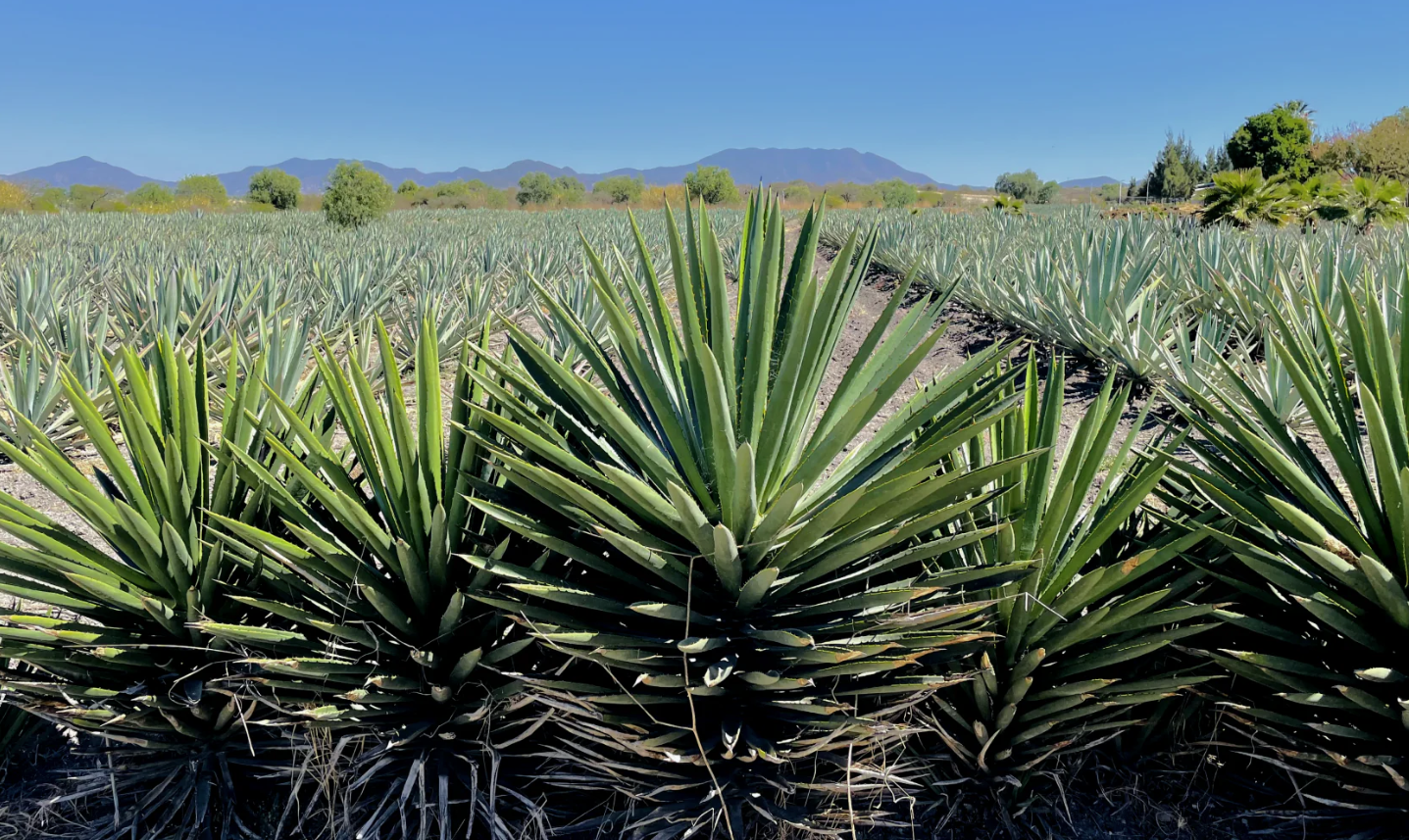Introduction
Mezcal isn’t just a drink; it’s a cultural icon steeped in history and tradition. Originating in Mexico, this smoky spirit has captured the hearts of aficionados worldwide. But what makes mezcal so special, and why is it essential to Mexican heritage? Let’s dive into the fascinating world of mezcal production.
What Is Mezcal?
Definition and Meaning
Mezcal is a distilled alcoholic beverage made from the fermented hearts of the agave plant. The term “mezcal” comes from the Nahuatl word metl ixcalli, meaning “oven-cooked agave.”
Origin of the Name “Mezcal”
The name reflects its traditional production method, where agave hearts are roasted in earthen pits, giving mezcal its characteristic smoky flavor.
A Brief History of Mezcal
Mezcal’s Pre-Hispanic Roots
The origins of mezcal date back to ancient Mexico, where indigenous peoples fermented agave to create pulque, a precursor to mezcal.
Evolution During the Colonial Period
With the introduction of distillation techniques by Spanish colonists, mezcal as we know it began to take shape, blending indigenous and European methods.
Modern-Day Popularity
In recent years, mezcal has gained global recognition for its artisanal craftsmanship and unique flavor profile, becoming a favorite in upscale bars and restaurants.
How Is Mezcal Made?
Mezcal is a traditional Mexican spirit with a rich history, crafted through a meticulous and often artisanal process that emphasizes natural methods and regional traditions. Here’s a step-by-step breakdown of how is mezcal made:
1. Harvesting the Agave
Mezcal is primarily made from the heart of the agave plant, known as the piña. While tequila is made specifically from blue agave, mezcal can be made from over 30 varieties of agave, with Espadín being the most commonly used.
- The agave plants are grown for 7 to 20 years, depending on the species, before harvesting.
- Once matured, the leaves are stripped away, leaving the piña, which resembles a large pineapple.
2. Roasting the Piñas
The defining characteristic of mezcal is its smoky flavor, achieved during this stage.
- The piñas are cooked in underground pit ovens lined with rocks and heated with wood.
- The piñas are then covered with earth or plant fibers and left to roast for 3 to 5 days, absorbing the smoky flavors.
3. Crushing the Cooked Agave
After roasting, the softened piñas are crushed to extract their sweet juices.
- Traditionally, this is done using a stone wheel called a tahona, which is pulled by a horse or mule.
- Modern methods may use mechanical shredders, though many producers stick to traditional techniques for authenticity.
4. Fermentation
The crushed agave pulp and its juices are transferred to large fermentation vats, often made of wood or stone.
- Natural fermentation occurs as wild yeasts interact with the sugars in the agave.
- This process can take 7 to 14 days, depending on the environment and the producer’s methods.
5. Distillation
The fermented liquid, now known as tepache, is distilled to concentrate the alcohol and refine the flavor.
- Traditional mezcal is distilled in copper or clay pot stills, depending on regional practices.
- The distillation process is typically done twice: the first distillation yields a raw spirit, and the second refines its taste and alcohol content.
6. Aging (Optional)
Not all mezcal is aged, but when it is, it can develop unique flavors. Mezcal is categorized by aging:
- Joven (Young): Bottled shortly after distillation, retaining its fresh, smoky character.
- Reposado (Rested): Aged in oak barrels for 2 to 12 months, gaining subtle wood and caramel notes.
- Añejo (Aged): Aged for over a year, offering complex flavors and a smoother finish.
7. Bottling and Labeling
Once the mezcal reaches its desired flavor profile, it is filtered (if necessary) and bottled. Many mezcal producers take pride in artisanal bottling, using hand-labeled and beautifully designed bottles.
8. Enjoying Mezcal
Mezcal is traditionally enjoyed neat, often with a slice of orange and a sprinkle of sal de gusano (a mixture of salt, chili, and ground agave worms). Its complex flavors—ranging from earthy and smoky to fruity and floral—make it a versatile spirit, perfect for sipping or mixing in cocktails.
The Ingredients Behind Mezcal
The Role of Agave Plants
Agave, known locally as maguey, is the backbone of mezcal. Each plant takes years to mature, contributing to mezcal’s complex flavors.
Types of Agave Used
While tequila is made only from blue agave, mezcal can be produced from over 30 varieties of agave, including Espadín, Tobalá, and Tepeztate.
Regional Variations
The type of agave and the region where it’s grown significantly impact mezcal’s flavor, with Oaxaca being the most famous production hub.
Mezcal Production Process
Harvesting the Agave
The first step is harvesting mature agave plants, which can take anywhere from 7 to 30 years to grow. Farmers cut the spiny leaves, leaving only the heart, or piña.
Roasting the Piñas
The piñas are roasted in underground pits lined with volcanic rocks, imparting the signature smoky flavor that sets mezcal apart.
Crushing and Fermentation
Once roasted, the piñas are crushed, traditionally using a stone wheel pulled by a horse. The crushed fibers are then fermented in wooden vats.
Distillation Techniques
The fermented mash is distilled in copper or clay stills, often twice, to produce a smooth, potent spirit.
Traditional vs. Industrial Methods
Artisanal mezcal is made using traditional methods, while some modern producers adopt industrial techniques to meet growing demand.
Also Read: Buzzing Royalty: Inside Kate Middleton Beekeeping Hobby
Regions Known for Mezcal Production
Oaxaca – The Heart of Mezcal
Oaxaca is the epicenter of mezcal production, boasting diverse agave species and centuries-old distillation traditions.
Other Notable States
States like Guerrero, Durango, and Puebla also produce mezcal, each with unique regional styles and flavors.
Types of Mezcal
Joven, Reposado, and Añejo
Mezcal can be categorized based on aging:
- Joven: Unaged and fresh.
- Reposado: Aged for 2-12 months in oak barrels.
- Añejo: Aged for over a year, offering rich, complex flavors.
Special Varieties (e.g., Pechuga Mezcal)
Pechuga mezcal is distilled with fruits, spices, and a raw chicken or turkey breast, adding layers of flavor.
Mezcal vs. Tequila
Key Differences in Production
While both are made from agave, mezcal is more versatile, with broader agave varieties and traditional roasting techniques.
Flavor Profiles and Uses
Mezcal’s smoky taste contrasts tequila’s sweeter profile, making it ideal for sipping or mixing in cocktails.
Sustainability in Mezcal Production
Challenges of Agave Farming
Overharvesting and long maturation periods pose threats to agave biodiversity.
Efforts to Protect Mezcal’s Future
Producers and conservationists are promoting sustainable farming practices and replanting programs.
Role in Mexican Traditions
Mezcal is deeply rooted in Mexican rituals and celebrations, symbolizing community and connection.
Mezcal Ceremonies and Rituals
From weddings to Day of the Dead, mezcal often plays a central role in ceremonies.
How to Enjoy Mezcal
Traditional Mezcal Tasting
Sip mezcal slowly to appreciate its complex flavors. Traditionally, it’s served in small clay cups called copitas.
Using a Copita
A copita allows the spirit’s aromas to shine, enhancing the tasting experience.
Mezcal in Cocktails
From smoky margaritas to mezcal negronis, this spirit adds depth to any cocktail.
Global Popularity of Mezcal
Mezcal in the International Market
Mezcal’s artisanal appeal has captivated global audiences, making it a staple in premium bars worldwide.
Impact on Mexican Economy
The mezcal boom has boosted local economies, providing livelihoods for many small producers.
Tips for Buying Authentic Mezcal
Reading the Label
Look for designations like “100% agave” and “artisanal” to ensure quality.
Supporting Artisanal Producers
Choose brands that prioritize traditional methods and sustainable practices.
Common Myths About Mezcal
The Worm in the Bottle
Not all mezcals include a worm, and its presence is more marketing than tradition.
Mezcal Is Just Spicy Tequila
Mezcal’s smoky, earthy profile is distinct from tequila, offering a wholly unique experience.
Challenges Ahead
Sustainability and over-commercialization remain pressing issues for the industry.
Innovations in Production
Producers are exploring new techniques and sustainable practices to adapt to growing demand.
Conclusion
Mezcal is more than just a drink; it’s a testament to Mexican culture, tradition, and craftsmanship. Whether you’re new to mezcal or a seasoned enthusiast, exploring this spirit offers a deeper appreciation for its history and artistry. Cheers to savoring mezcal responsibly and sustainably!
FAQs
- What is the main difference between mezcal and tequila?
Mezcal is made from various agave types and roasted in pits, giving it a smoky flavor, while tequila is made from blue agave and has a sweeter profile. - How is the smoky flavor of mezcal achieved?
The smoky taste comes from roasting agave hearts in underground pits lined with volcanic rocks. - What is the best way to drink mezcal?
Sip it slowly from a copita to appreciate its complex flavors. - Are all mezcals artisanal?
Not all mezcals are artisanal; some are produced using industrial methods. Look for “artisanal” on the label to ensure traditional craftsmanship. - What regions in Mexico produce mezcal?
While Oaxaca is the most famous, other states like Guerrero, Durango, and Puebla also produce mezcal.




